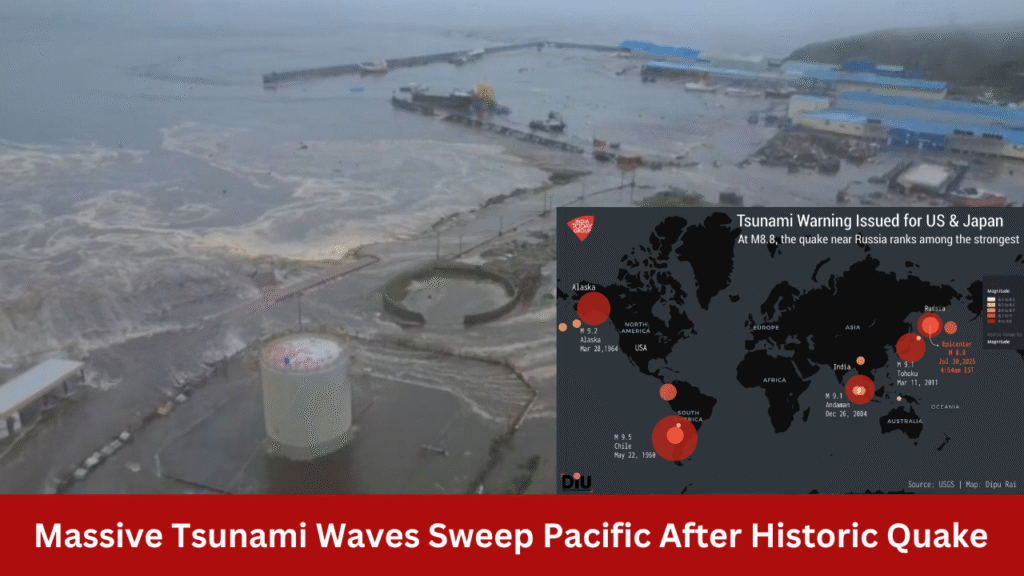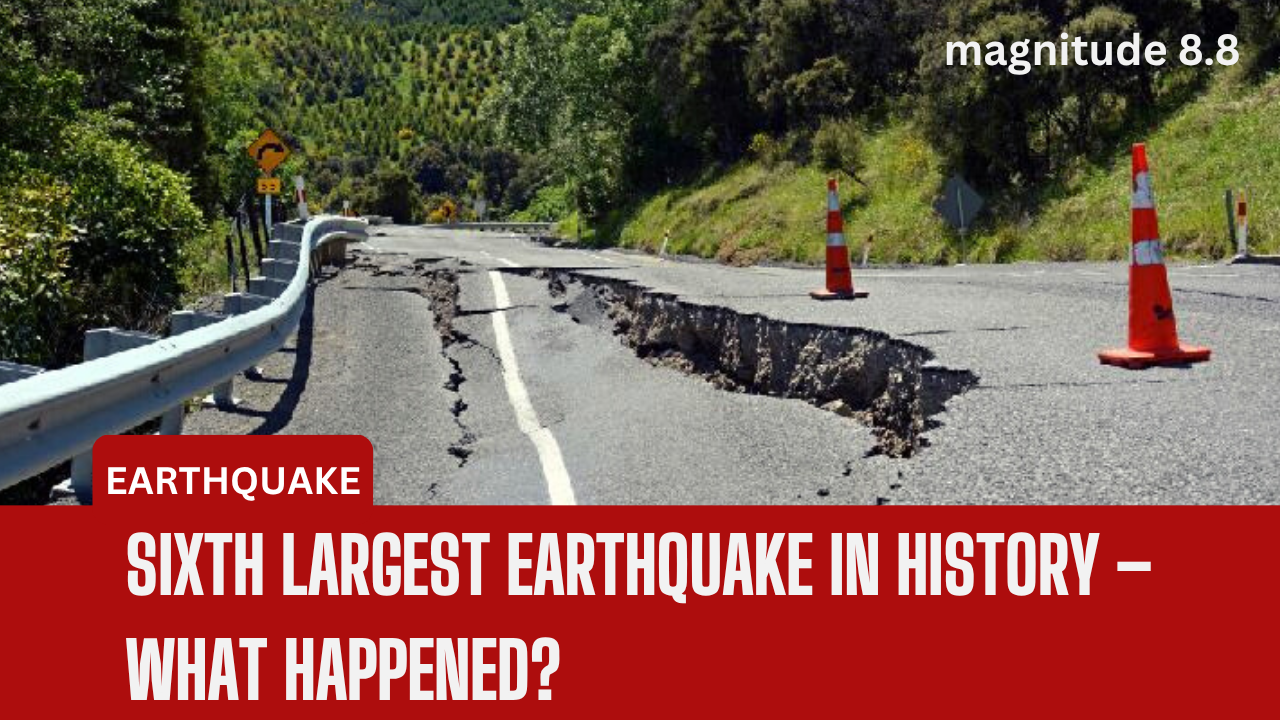1. A Historic Tremor
- On July 29–30, 2025, an 8.8 magnitude earthquake struck off the Kamchatka Peninsula in Russia, tying it as the sixth-largest ever recorded by modern instruments.
- The quake originated in a subduction zone where the Pacific Plate dips into the Okhotsk microplate and was extremely shallow (~12-20 km), increasing its destructive potential.

2. Regional Devastation and Aftershocks
- Near the epicenter—roughly 74 miles southeast of Petropavlovsk‑Kamchatsky—shaking reached Modified Mercalli intensity VIII, causing extensive damage and injuries in the sparsely populated region.
- An earlier M 7.4 tremor on July 20 is believed to have been a foreshock. Afterward, dozens of aftershocks, some exceeding M 6.0, continued for days.
3. Tsunamis across the Pacific
- The earthquake caused a wave up to 13 feet (4 meters) high at Severo-Kurilsk, resulting in widespread evacuations.
- Warnings were issued across Japan, the U.S. West Coast (Alaska, California, Oregon, Washington, and Hawaii), and countries including the Philippines, Taiwan, Indonesia, Mexico, and Pacific Island nations.
- Japan evacuated about 1.9 million people and observed waves up to 1.3 m in northern Honshu and Hokkaido.
- Hawaii recorded 1.2–1.7 m waves, leading to coastal evacuations, ski‑height currents, and flight disruptions in Maui and Kauai.
- Northern California—notably Crescent City—suffered significant harbor damage from a ~4‑ft surge, but resilience measures kept vessel losses at bay (estimated $1M in harbor repair costs).
4. Infrastructure & Communications
- Remarkably, subsea internet cables (e.g. AWS, Google Cloud, Russia’s coastal links) emerged unscathed, maintaining global connectivity. An underwater landslide had not been triggered.
5. Scientific and Tectonic Significance
- This event reinforces the volatility of the Pacific “Ring of Fire,” notorious for large megathrust quakes and tsunamis.
- Scientists are using the foreshock-aftershock pattern to improve prediction models in subduction zones and disaster preparedness processes.
6. Wider Impacts: Human & Economic
- Although direct fatalities appear limited, the quake triggered mass evacuations, disrupted air travel, and stressed emergency services across multiple countries.
- Coastal sectors, including tourism, fishing, and marine logistics, endure interruptions owing to port damage and restricted access during tsunami warnings.
🌐 Global Lessons and Takeaways
| Theme | Insight |
|---|---|
| Preparedness | The event highlights the importance of coordinated tsunami alerts and resilient harbor engineering. |
| Interconnected Risk | Even distant populations—across thousands of miles—can be directly impacted via tsunami and tremor networks. |
| Infrastructure resilience | Public and private sectors appear better prepared than in 2011, managing risks to cables, ports, and communications. |
| Scientific value | The Kamchatka earthquake gives important information on megathrust dynamics, foreshock patterns, and subduction processes. |
Conclusion
This earthquake event is notable not just for its raw intensity but also for its worldwide impact—including far-reaching tsunami waves, cross-border evacuations, and international scientific attention. As one of the most significant earthquakes in modern times, it underlines the significance of real-time hazard response systems, infrastructure resilience, and ongoing research into seismic warning indicators.

